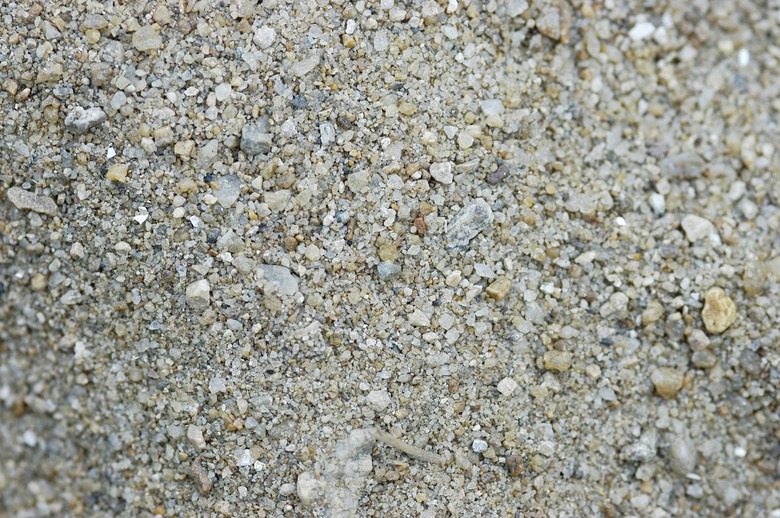Types Of Processed Gravel
Step 1
Processed gravels often include the addition of clay particles, according to Driveway Tips. Clay acts as a standard and inexpensive component to give the gravel body, and it provides an adhesive element for all remaining materials to naturally compact. Clay-based gravel can be found at most local home supply stores. Exposure to excessive rain water may turn the clay into a thick and gooey mess.
Fine Gravel
Step 1
Gravel made primarily of fine particles gives any walkway of soft and flexible texture. Fine particles mixed with clay, notes the EPA, are useful for both wet and dry seasons to extend the bond of gravel. Fine textures help maintain an even driving or walking surface and will rapidly dry and re-harden in warm temperatures. Alternatively, a sand-based gravel lacks the capacity to compact as well as its clay-based counterpart.
Step 2
- Processed gravels often include the addition of clay particles, according to Driveway Tips.
- Fine particles mixed with clay, notes the EPA, are useful for both wet and dry seasons to extend the bond of gravel.
Recycled Gravel
Step 1
Recycled gravel is the procedure of re-processing aged gravel for alternative uses. Aged gravel is crushed and re-processed through a gravel mill and often mixed with fresh materials. Asphalt, concrete and brick are three standard materials used in the creation of recycled gravel, according to Driveway Tips. A recycled gravel pathway will hold up a minimum of a full 12 months of exposure to the natural elements, prior to any subsequent and costly top coating.
Construction
Step 1
Constructing a gravel pathway requires its own set of distinct demands. While a gravel driveway, can last a lifetime, the pathways — driveways or otherwise — are most suited to level surfaces. Pathways with sharp inclines or declines run the risk of having the gravel positioning disrupted in the event of strong rain. Given the porous nature of gravel, pathway owners must understand that weed control is necessary because pesky plant life may grow up through the stone. Nevertheless, gravel is usable as a pathway itself or as a base for a concrete top coating.
Step 2
- Recycled gravel is the procedure of re-processing aged gravel for alternative uses.
- Asphalt, concrete and brick are three standard materials used in the creation of recycled gravel, according to Driveway Tips.
